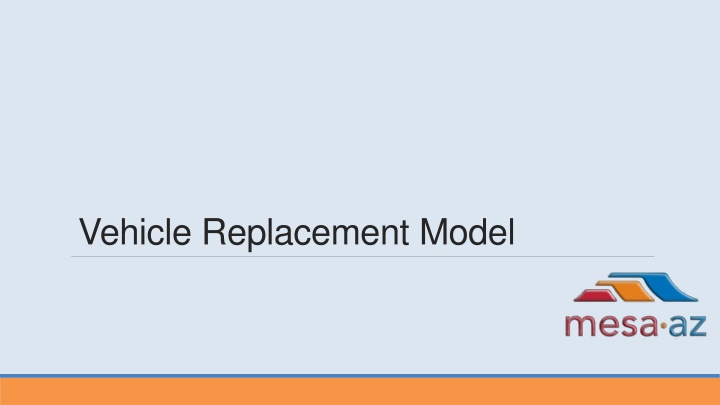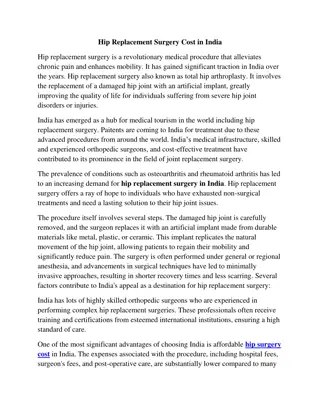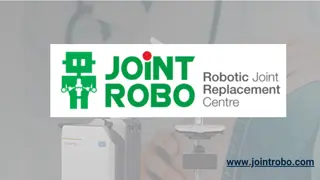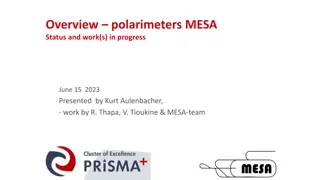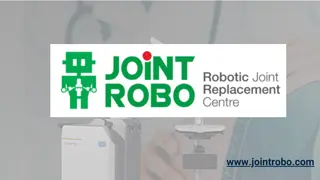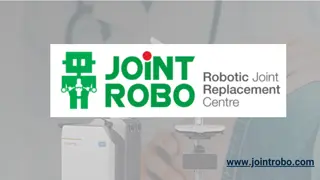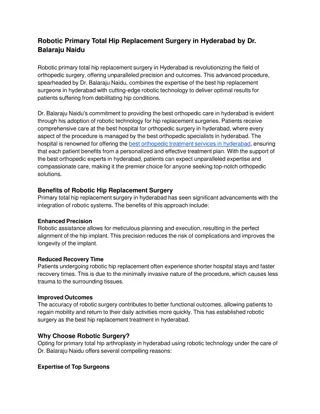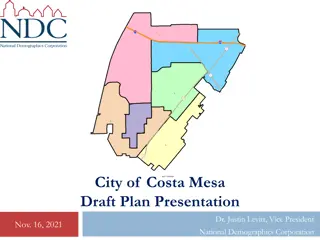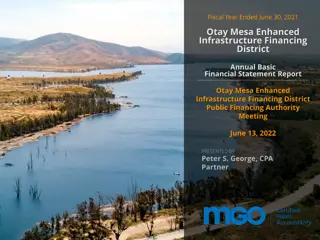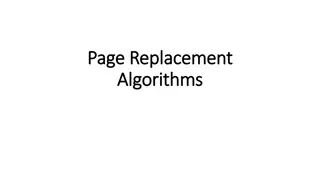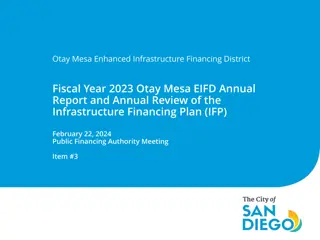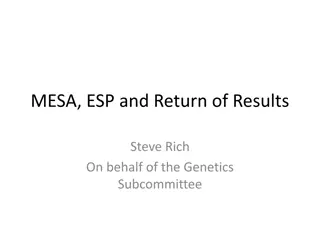Comprehensive Analysis of Vehicle Replacement Models in City of Mesa
Delve into the strategic decision-making process behind vehicle replacement cycles for City of Mesa's fleet, exploring factors influencing replacement age, mileage considerations, cost evaluations, and operational outcomes. Through detailed frameworks, trigger theories, and analytical processes, this analysis offers insights into optimizing fleet management practices and achieving cost-effective solutions.
Download Presentation

Please find below an Image/Link to download the presentation.
The content on the website is provided AS IS for your information and personal use only. It may not be sold, licensed, or shared on other websites without obtaining consent from the author.If you encounter any issues during the download, it is possible that the publisher has removed the file from their server.
You are allowed to download the files provided on this website for personal or commercial use, subject to the condition that they are used lawfully. All files are the property of their respective owners.
The content on the website is provided AS IS for your information and personal use only. It may not be sold, licensed, or shared on other websites without obtaining consent from the author.
E N D
Presentation Transcript
Project Evolution Trigger City of Mesa s Vehicle Replacement Model Theory Data Assets Dilemmas Framing Alignment Analysis Process Analytical Framework Trigger Theory Analysis Process Dilemmas
Trigger1 December 2015: Solid Waste Department requests help to evaluate pros and cons of moving to a 5-year replacement cycle from a 7-year replacement cycle for ASL garbage trucks. Framing Data Assets Alignment Trigger Theory Analysis Process Dilemmas
Trigger2 Mesa s Fleet: 1,493 vehicles $105 million book $160 million replace 10-year cycle? 13-year cycle? Framing Data Assets Alignment Trigger Theory Analysis Process Dilemmas
Practice Factors Influencing Vehicle Replacement Age Mileage Blue Book : Repair cost Why do we retire a vehicle? Data Assets Alignment Framing Trigger Theory Analysis Process Dilemmas
Performance Analysis Framework Post-mortem Causality Describe Predict Prescribe Objectives Simulation Optimization Change Management Outcomes Inputs Data Assets Alignment Framing Trigger Theory Analysis Process Dilemmas
Vehicle Data at City of Mesa For every vehicle since its introduction into the fleet: Activity Vehicle Costs Miles Downtime: Department Work Order Gross DT Hours Age Direct Shop Labor Hours Purchase Upfitting Fuel Preventative Maintenance Repairs (Warranty) Modifications Accidents Decommission (Sale) Framing Alignment Data Assets Trigger Theory Analysis Process Dilemmas
Patrol Vehicle #1558 Framing Alignment Data Assets Trigger Theory Analysis Process Dilemmas
Patrol Vehicle #1558 Framing Alignment Data Assets Trigger Theory Analysis Process Dilemmas
Patrol Vehicle #1558 Framing Alignment Data Assets Trigger Theory Analysis Process Dilemmas
Patrol Vehicle #1558 & #1673 Framing Alignment Data Assets Trigger Theory Analysis Process Dilemmas
Patrol Vehicle #1558 & #1673 & All Patrol Cars Month 96: $24,500 Evaluate by AGE Lemons: Too long Cherries: Too soon Month 82: $19,000 Month 96: $19,000 Framing Alignment Data Assets Trigger Theory Analysis Process Dilemmas
Patrol Vehicle #1558 & #1673 & All Patrol Cars Evaluate by MILES Framing Alignment Data Assets Trigger Theory Analysis Process Dilemmas
Theory Factors Influencing Vehicle Replacement Age Mileage Blue Book valuation Why do we retire a vehicle? Conceptually easy to understand Weak reliability Weak validity Ignores individual characteristics Inter-department competition Framing Data Assets Alignment Trigger Theory Analysis Process Dilemmas
Theory Factors Influencing Vehicle Replacement Age Mileage Blue Book valuation Safety Configuration Availability Operating Cost Capital Cost Financial capacity Why should we retire a vehicle? Department Fleet Services Budget Office Framing Data Assets Alignment Trigger Theory Analysis Process Dilemmas
Theory How to make a decision based on all relevant factors Why should we retire a vehicle? quickly transparently accurately inexpensively consistently? Data Assets Alignment Framing Trigger Theory Analysis Process Dilemmas
Analysis Calculate the optimal retirement year of each vehicle in real-time Inputs Vehicle cost history Vehicle operating pattern Vehicle cost forecast Estimated salvage value Compare lifetime costs of different retirement cycles Alternative Vehicle Retirement Model Consider additional inputs Safety Configuration Availability Financial capacity Data Assets Alignment Framing Trigger Theory Analysis Process Dilemmas
Total Costs of a Vehicle by Month in Service Sale Purchase Framing Alignment Data Assets Trigger Theory Analysis Process Dilemmas
Total Costs of a Vehicle by Month in Service 7 year (5,000) 5 year (25,000) Framing Alignment Data Assets Trigger Theory Analysis Process Dilemmas
Total Costs of a Vehicle by Month in Service 5-year retirement cycle Framing Alignment Data Assets Trigger Theory Analysis Process Dilemmas
Repeat the Decision 5-year retirement cycle Framing Alignment Data Assets Trigger Theory Analysis Process Dilemmas
Repeat the Decision 5-year retirement cycle Framing Alignment Data Assets Trigger Theory Analysis Process Dilemmas
Total Costs of a Vehicle by Month in Service 5-year retirement cycle 7-year retirement cycle Framing Alignment Data Assets Trigger Theory Analysis Process Dilemmas
Repeat the Decision 5-year retirement cycle 7-year retirement cycle and Compare The 7-year replacement cycle is 6.1% less expensive per year But is it the But is it the optimal year to optimal year to retire the vehicle? retire the vehicle? Framing Alignment Data Assets Trigger Theory Analysis Process Dilemmas
Repeat the decision for multiple cycle durations (4-year, 5-, 6-, , 25-year) 5.8% 4.6% 3.5% 2.6% over very long periods 1.9% 1.3% compare the slopes of the trajectory 0.0% 0.8% 0.0% Framing Alignment Data Assets Trigger Theory Analysis Process Dilemmas
Alternative Replacement Model Lowest cost replacement cycle Comparing the marginal cost of maintenance to the net capital cost Premium over lowest cost year Framing Alignment Data Assets Trigger Theory Analysis Process Dilemmas
Alignment Framing Data Assets Trigger Theory Analysis Process Dilemmas
Alignment Framing Data Assets Trigger Theory Analysis Process Dilemmas
Alternative Replacement Practices Considers all known replacement factors for each individual vehicle Considers operational patterns Updates daily Improved reliability and validity Improved flexibility for cost assumptions Improved memory for exceptions Identifies ways to conserve money Advantages Significant change from current replacement practice More complex Requires advanced operator for now Disadvantages Data Assets Alignment Framing Trigger Theory Analysis Process Dilemmas
Process Access to high quality long term data Big, long-lived asset class compelling need Invited vs sent improved receptivity; double-edged Early executive support manage information Built the simulation in advance end from beginning Focus groups describe stakeholder bias Long implementation horizon no quick win bias Presentation innovations extreme transparency Incriminating artifacts passed the logic test Live experiment time to reflect and learn Framing Data Assets Alignment Trigger Theory Analysis Process Dilemmas
Dilemmas (at Year 3 ) Trade-offs Lower capital expense older vehicles more mechanics Low use & old vehicles refurbishing risks Playing the odds Extend 35 but lose 2 Answer shopping Say whatever it takes to justify a new vehicle Emergent appearance standard Controls, picking your battles, end-runs Strong tendency to revert back to age and miles Slippage and rounding: accelerate by a year or three Need 0; Want 1; Ask for 20; Get 1 Distractions, bad memory, pork-barreling Bait & switch Documentation Configuration inflation Framing Data Assets Alignment Trigger Theory Analysis Process Dilemmas
Decision Quality Analytics
